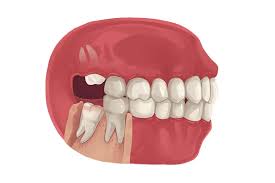
Breaking News
SEMI-NEWS/SEMI-SATIRE: December 7, 2025 Edition
 Harbor Freight Coverpro 12x20 made into a Metal Building part 2
Harbor Freight Coverpro 12x20 made into a Metal Building part 2
 Brian Cole BUSTED, Halle Berry NUKES Newsom + Candace REJECTS TPUSA Challenge...
Brian Cole BUSTED, Halle Berry NUKES Newsom + Candace REJECTS TPUSA Challenge...
 I spent my Thanksgiving in the emergency rom... Medical emergencies can pop up at any time.
I spent my Thanksgiving in the emergency rom... Medical emergencies can pop up at any time.
Top Tech News
 Build a Greenhouse HEATER that Lasts 10-15 DAYS!
Build a Greenhouse HEATER that Lasts 10-15 DAYS!
 Look at the genius idea he came up with using this tank that nobody wanted
Look at the genius idea he came up with using this tank that nobody wanted
 Latest Comet 3I Atlas Anomolies Like the Impossible 600,000 Mile Long Sunward Tail
Latest Comet 3I Atlas Anomolies Like the Impossible 600,000 Mile Long Sunward Tail
 Tesla Just Opened Its Biggest Supercharger Station Ever--And It's Powered By Solar And Batteries
Tesla Just Opened Its Biggest Supercharger Station Ever--And It's Powered By Solar And Batteries
 Your body already knows how to regrow limbs. We just haven't figured out how to turn it on yet.
Your body already knows how to regrow limbs. We just haven't figured out how to turn it on yet.
 We've wiretapped the gut-brain hotline to decode signals driving disease
We've wiretapped the gut-brain hotline to decode signals driving disease
 3D-printable concrete alternative hardens in three days, not four weeks
3D-printable concrete alternative hardens in three days, not four weeks
 Could satellite-beaming planes and airships make SpaceX's Starlink obsolete?
Could satellite-beaming planes and airships make SpaceX's Starlink obsolete?
Wisdom Teeth Contain Unique Stem Cell That Can Form Cartilage, Neurons, and Heart Tissue

But an astounding new discovery has found that this third set of molars contain a unique form of human stem cell that can be harvested and used to regrow bone, heart tissue, and even neurons.
It's an exciting field full of promise, full of potential benefits, but substantial amounts of further research and evidence is needed to truly understand what these four extra teeth could do for us in the long term beyond tearing up almonds and salad.
For starters, wisdom teeth contain a soft center of tissue called dental pulp that keeps the tooth alive. This pulp contains immature cells which a team of scientists at the University of the Basque Country in Spain have transformed into several different kinds of cells.
Dr. Gaskon Ibarretxe, an associate professor in the Cell Biology and Histology Department at the university, led a recent study that turned pulp cells into electrically excitable pseudo-neurons that demonstrated "essentially electrical activity" in concert with proper neurons.
They could help treat damaged brain circuitry from any number of conditions or trauma.
According to Earth.com, pulp-derived stem cells have some interesting and unique properties, including the capacity to build mineralized tissue faster than bone marrow-derived stem cells. Scientists have used dental?pulp secretions to improve heart ejection fractions in mice with heart failure, and in vitro, these cells seem to lay down layers of collagen and calcium in neat, orderly sheets, making them potentially attractive for joint cartilage repair.
From the logistics and cost standpoint, they're an ideal source of stem cells. Bone marrow cells require painful injections that sometimes can't involve anesthesia, while embryonic or placental stem cells without ethical concerns require someone to decide to have a baby.
By contrast, almost all humans are born with wisdom teeth, and they're often removed in the teenage years when little DNA damage has taken place inside the dental pulp; making them exceptionally malleable and safer.
Earth.com claims 10 million wisdom teeth are removed every year, but the process of sending them to a biobank could be very simple. A kit—offered by a company like Stemodontics—could be bought and shipped to a dentist's office ahead of the procedure. The tooth is put in a vial, placed on dry ice, and rushed to a lab where the pulp would be extracted and preserved as a potentially life-changing form of cellular insurance.

 First totally synthetic human brain model has been realized
First totally synthetic human brain model has been realized Mach-23 potato gun to shoot satellites into space
Mach-23 potato gun to shoot satellites into space

